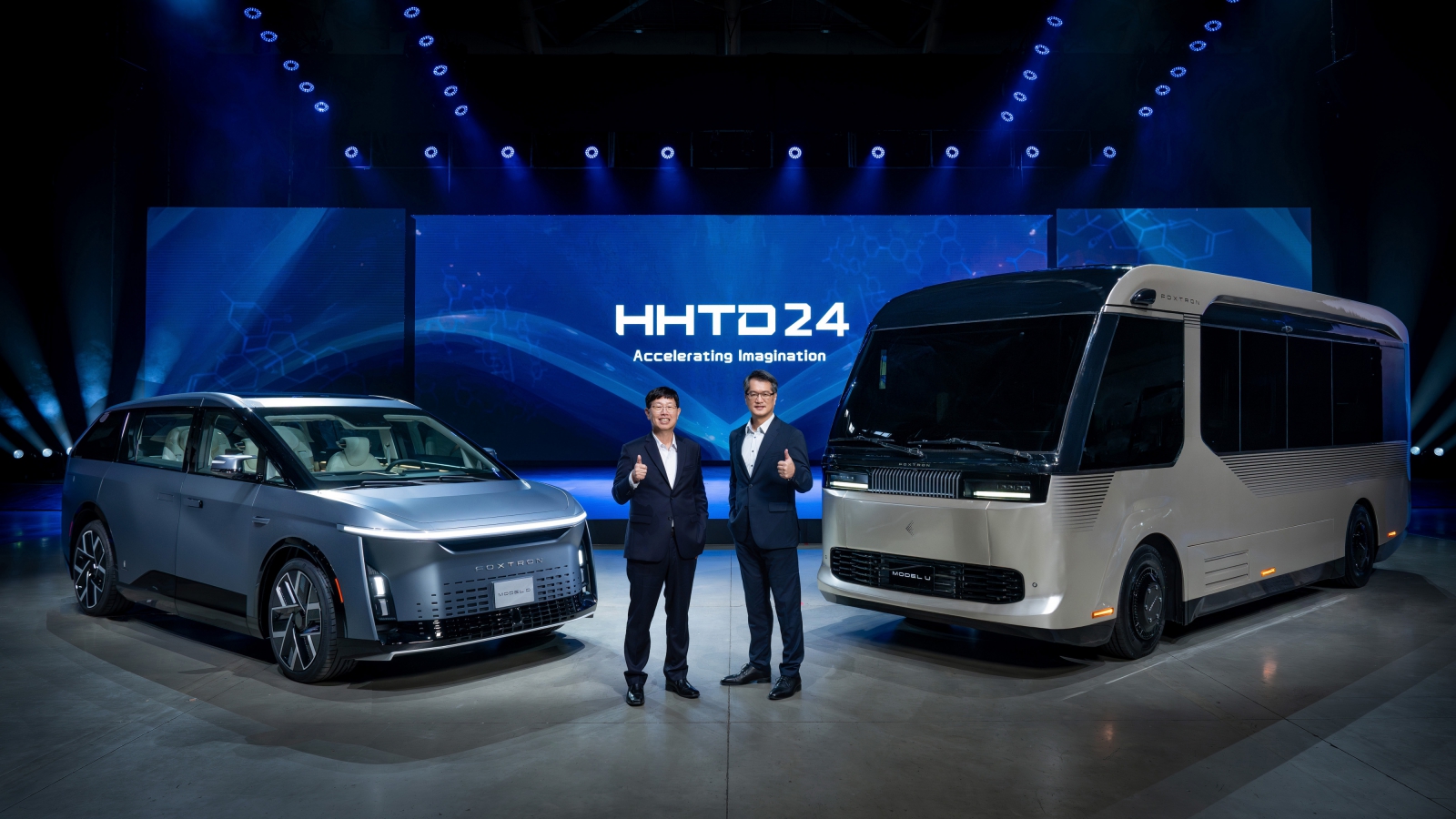
Foxconn Technology Day (HHTD24), a major annual event in the tech industry, is held on October 8 at the Nangang Exhibition Center, attracting over 2,000 registered attendees. (Photo: Foxconn)
Foxconn Technology Day (HHTD24) kicked off its fifth annual event on October 8, unveiling the latest electric car, Model D, and an electric mid-size bus, Model U, while also announcing a partnership with Breakthrough Energy Ventures (BEV), the energy investment fund co-founded by Microsoft’s Bill Gates.
The much-anticipated event, held at the Nangang Exhibition Center, attracted over 2,000 attendees. For the first time, the event spanned two days, allowing public access. Chairman Liu Yang-wei (劉揚偉) made a grand entrance in the Model C electric vehicle, driven by Taiwanese rally driver Chen He-huang (陳和皇).
This year’s event centered on six themes: smart manufacturing, electric vehicles, smart city integration with digital health, high-performance computing, semiconductors, and advanced technologies. In addition to debuting the Model D electric car and Model U electric bus, Foxconn revealed its partnership with Breakthrough Energy Ventures, aiming to bring new energy solutions to market.
Foxconn debuts Model D, Model U at HHTD24
Unlike traditional car manufacturers that handle production end-to-end, Foxconn employs a contract design and manufacturing service (CDMS) model for its electric vehicles, completing 80% of the work and leaving only 20% for its clients.
To date, Foxconn has introduced six EV models, including the Model C SUV, the Model E luxury sedan, the Model T electric bus, the Model B crossover concept car, the Model V electric pickup, and the Model N electric delivery vehicle.
The new Model D, a versatile crossover combining SUV and MPV features, is built on Foxconn’s latest platform and measures 5.1 meters long with a wheelbase of 3.2 meters, offering ample passenger space.
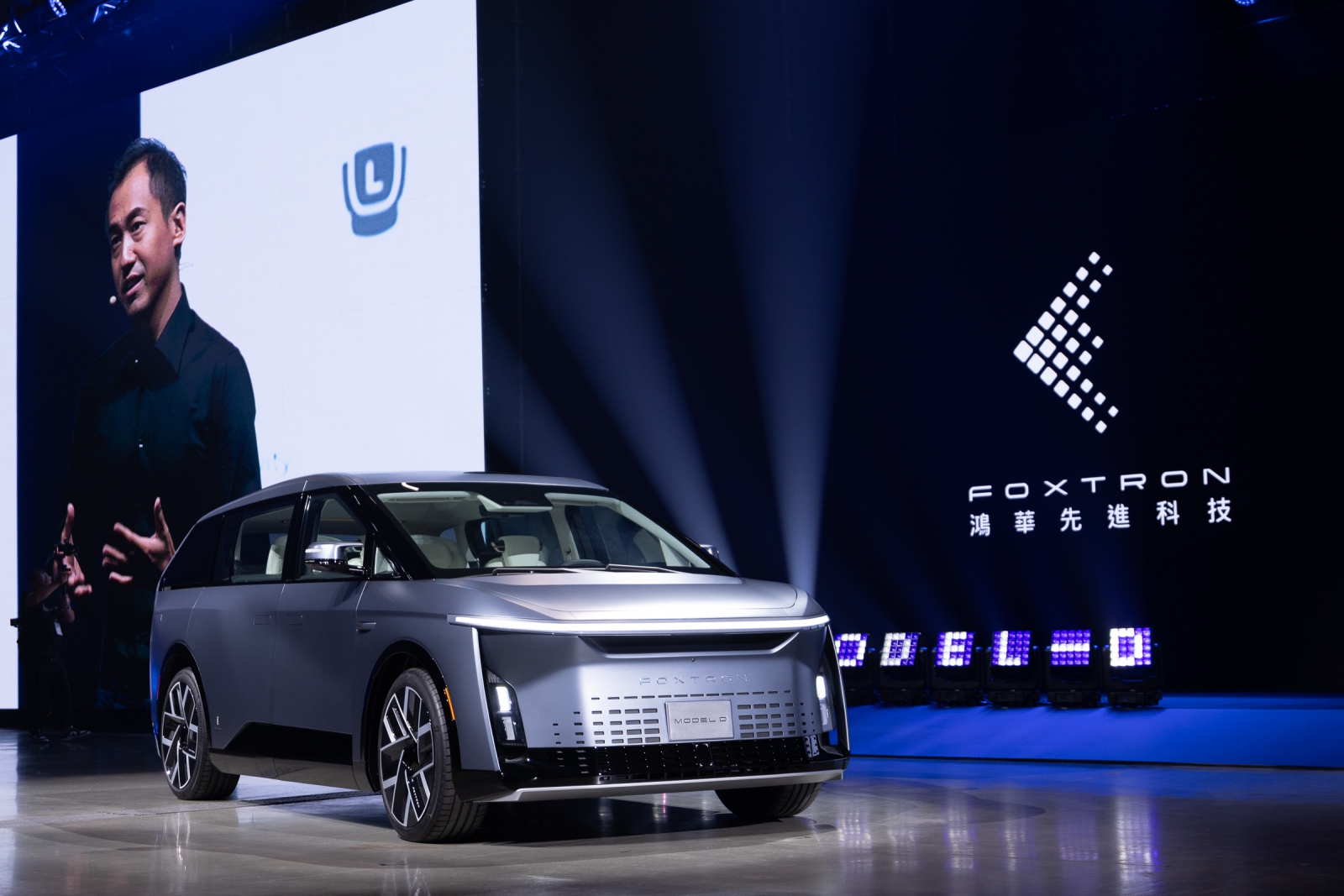
The Model D is a versatile hybrid vehicle combining the advantages of SUVs and MPVs, built on Foxconn’s latest platform technology. (Photo: Foxconn)
The Model U electric bus, tailored for narrow urban streets and remote areas, emphasizes flexibility and multi-functionality. Its interior can be configured for different purposes, such as VIP transport or mobile office space, and features optimized structural and aerodynamic design for extended range.
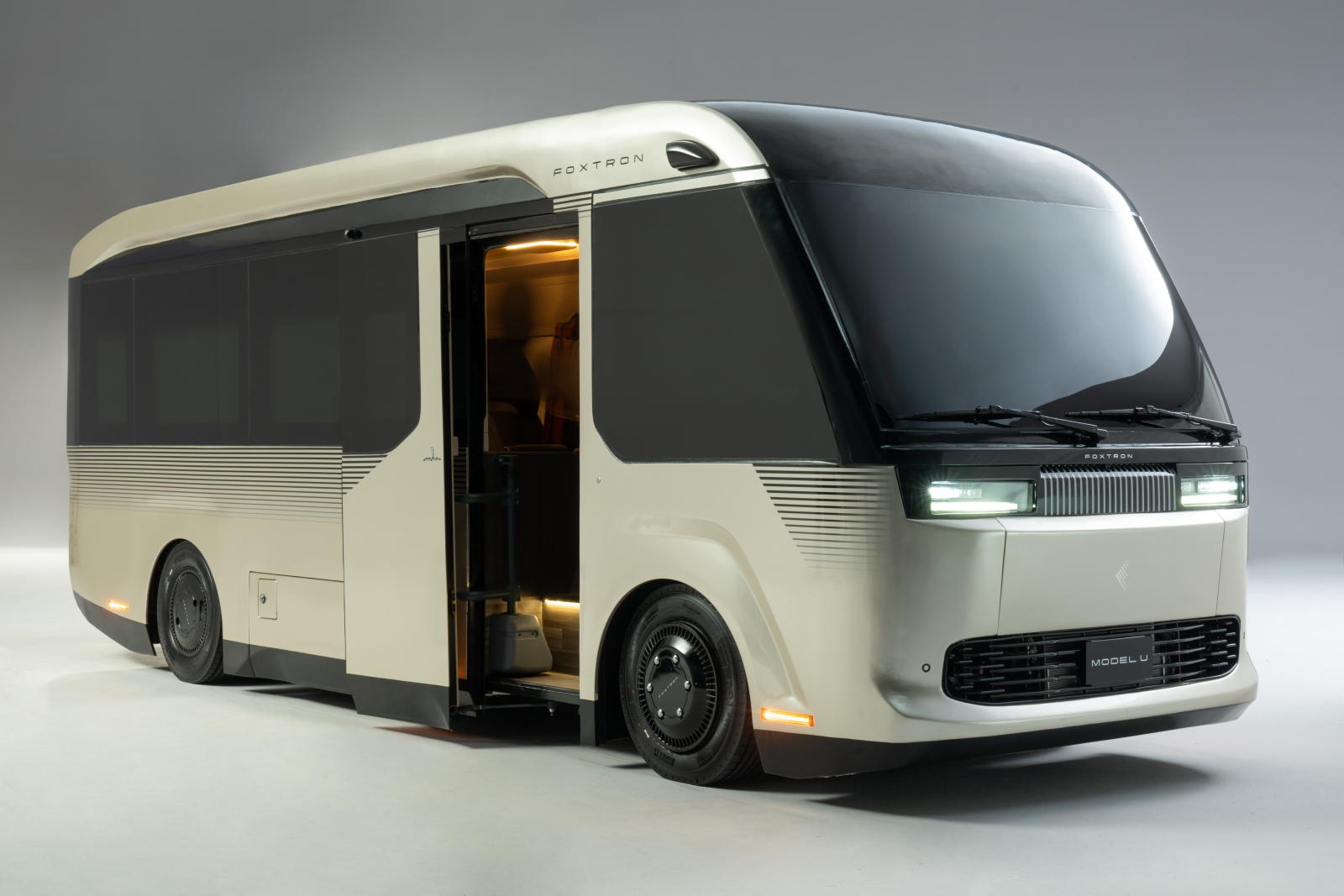
The Model U, a mid-size electric bus, is designed for narrow urban streets and remote areas. Its design emphasizes flexibility and multifunctionality, with an interior that can be configured to meet various needs. (Photo: Foxconn)
Foxconn also presented the Model A MPV, a prototype led by chief EV strategist, Jun Seki. The Model A, aimed at the B2B market, supports applications from household and commercial use to logistics and taxis.
The Model A is an MPV multipurpose vehicle aimed at the B2B market, with applications ranging from household and commercial use to logistics and taxis. (Photo: Carol Chen)
Foxconn’s expanding battery manufacturing for EVs and energy storage
Beyond EV production, Foxconn is expanding upstream into battery manufacturing. Chairman Liu revealed that Foxconn’s Kaohsiung battery cell plant will soon enter mass production, targeting both electric vehicles and energy storage systems.
In its smart EV exhibition area, Foxconn displayed a diverse range of battery products, including automotive batteries, energy storage batteries, and an entire storage cabinet.
Foxconn exhibits vehicle batteries and energy storage batteries on-site, which are lithium iron phosphate (LFP) batteries. (Photo: Carol Chen)
The automotive batteries are slated for mass production by the end of the year, and the storage cabinet, with a capacity to store 300 kWh per day, is geared toward small and medium-sized businesses, such as supermarket chain PX Mart.
Foxconn’s energy storage cabinet is aimed at the needs of small and medium-sized businesses, capable of storing 300 kWh per day, making it suitable for retailers such as PX Mart. (Photo: Carol Chen)
Foxconn is also developing next-generation solid-state batteries, showcasing a solid-state battery module for electric two-wheelers at the event. The semi-solid-state technology ensures the battery remains cool and safe under high output conditions.
Foxconn displays a “solid-state battery module for electric two-wheelers,” expected to receive safety certification in the fourth quarter. (Photo: Carol Chen)
This solid-state battery, expected to pass safety certifications by Q4, uses solid electrolytes to prevent leaks, reducing the risk of EV fires.
Partnering with reakthrough Energy Ventures to accelerate new energy solutions
To further its clean energy ambitions, Foxconn announced a partnership with Breakthrough Energy Ventures (BEV), a $1 billion energy-focused fund co-founded by Bill Gates and other prominent entrepreneurs.
Chairman Liu emphasized the importance of creating a viable business model for new energy, stating, “It’s not enough to just talk about ‘going green’—Foxconn is here to make it commercially viable.”
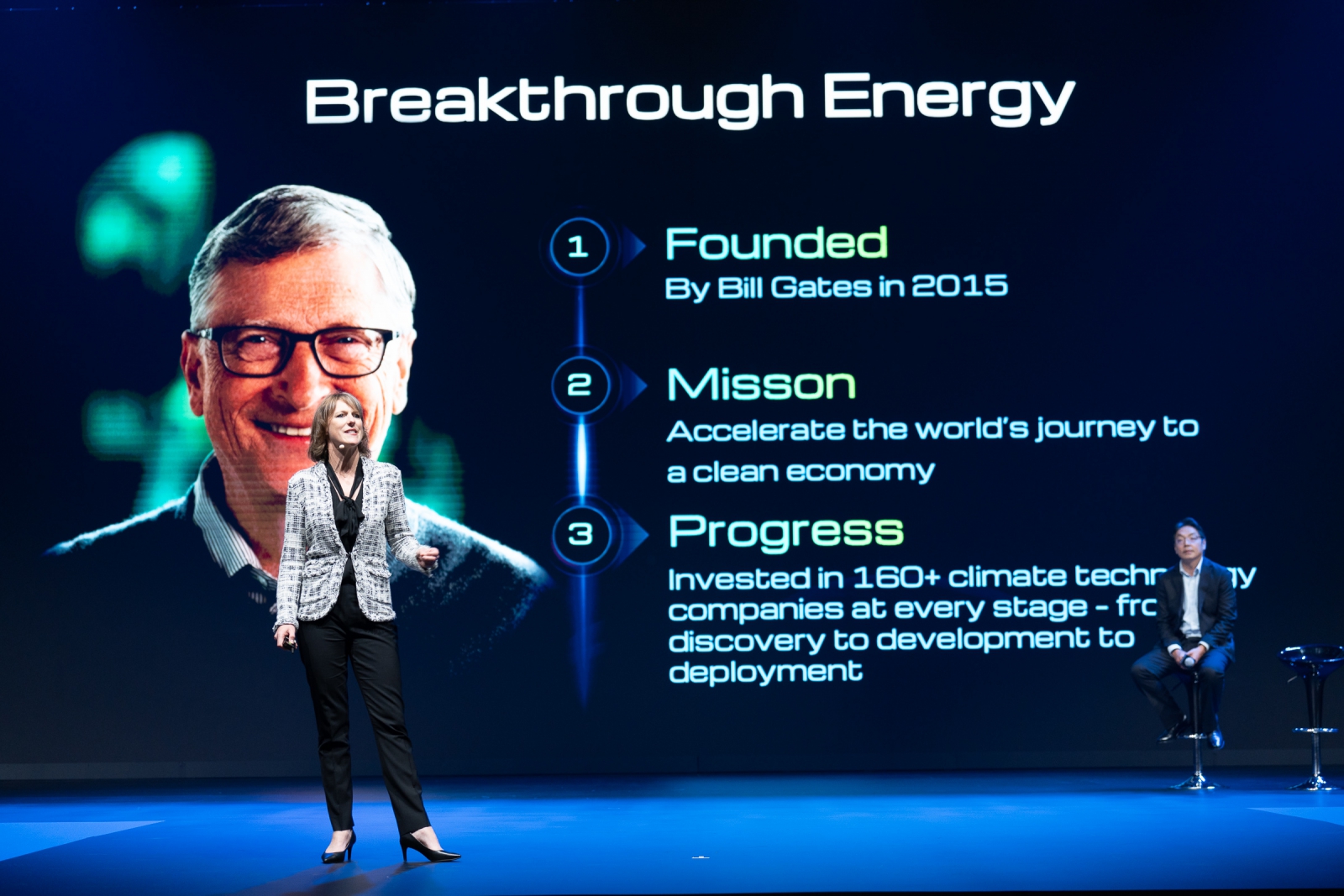
Libby Wayman, a partner at Breakthrough Energy Ventures, stated at the event that she is optimistic about two key areas of development to address climate change—nuclear fusion and battery technology. (Photo: Foxconn)
Libby Wayman, a partner at BEV, spoke at the event about the fund’s investments in over 160 companies to address climate change. She highlighted nuclear fusion and battery technology as promising areas of growth, noting that the energy grid must expand fourfold to meet future demands from sectors like AI and EVs.
She stated that 75% of new grid capacity currently comes from solar and wind, but challenges remain in managing renewable energy supply. Nuclear fusion, she explained, has emerged as a viable option for stable base-load power, with scientists demonstrating net energy gain after decades of research.
Wayman also noted the acceleration of EV adoption, with global sales reaching 14 million units in 2023—a 35% increase year-over-year—and 40 million EVs on the road today.
However, the shift from gasoline to electric vehicles faces hurdles, including cost, range, materials sourcing, and battery safety. Companies that can overcome these obstacles are poised for substantial growth and market leadership.
Foxconn’s investment in battery technology aligns with BEV’s outlook on the new energy market, highlighting the potential for batteries beyond electric vehicles to meet the demands of future net-zero applications.
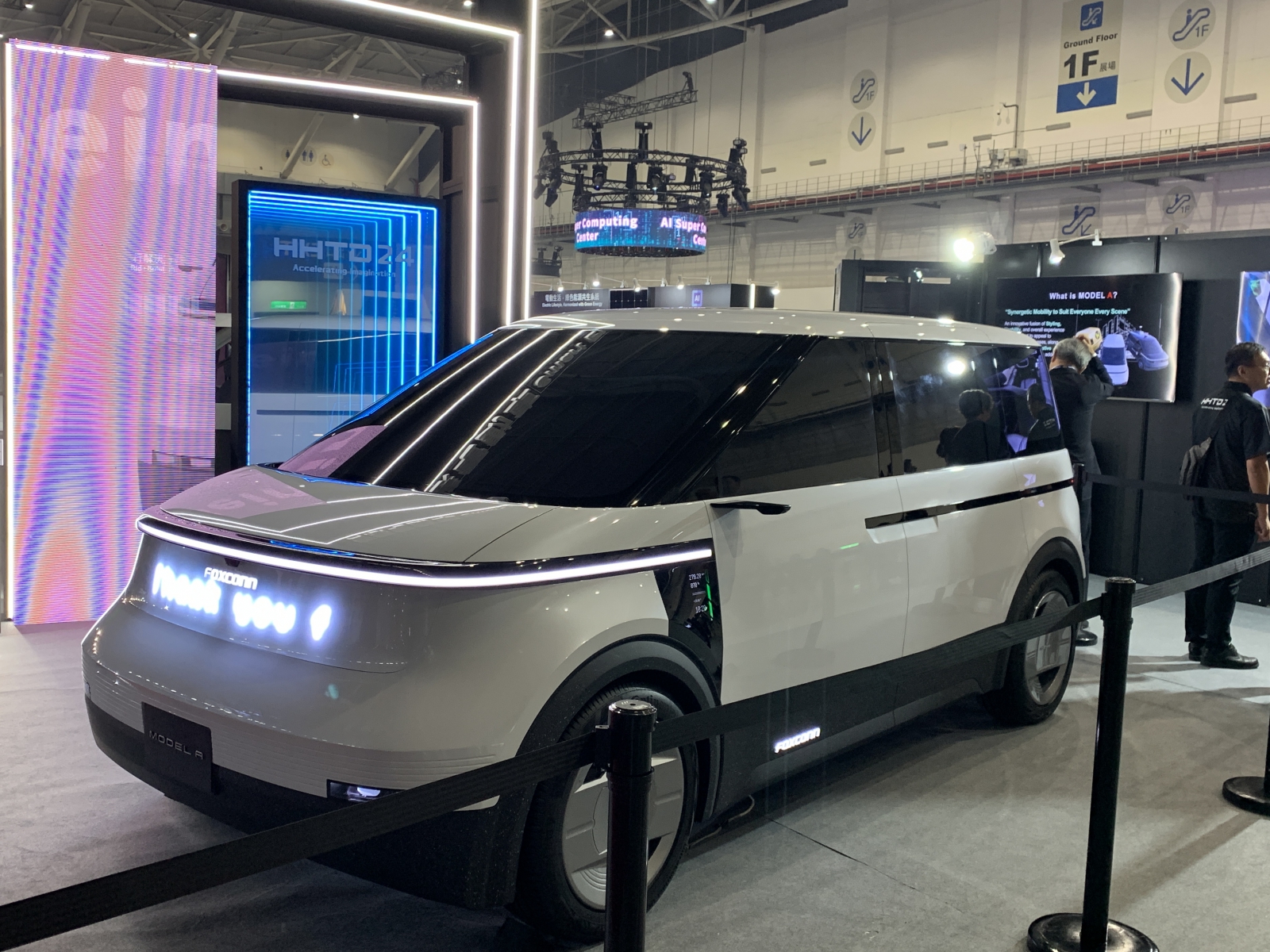
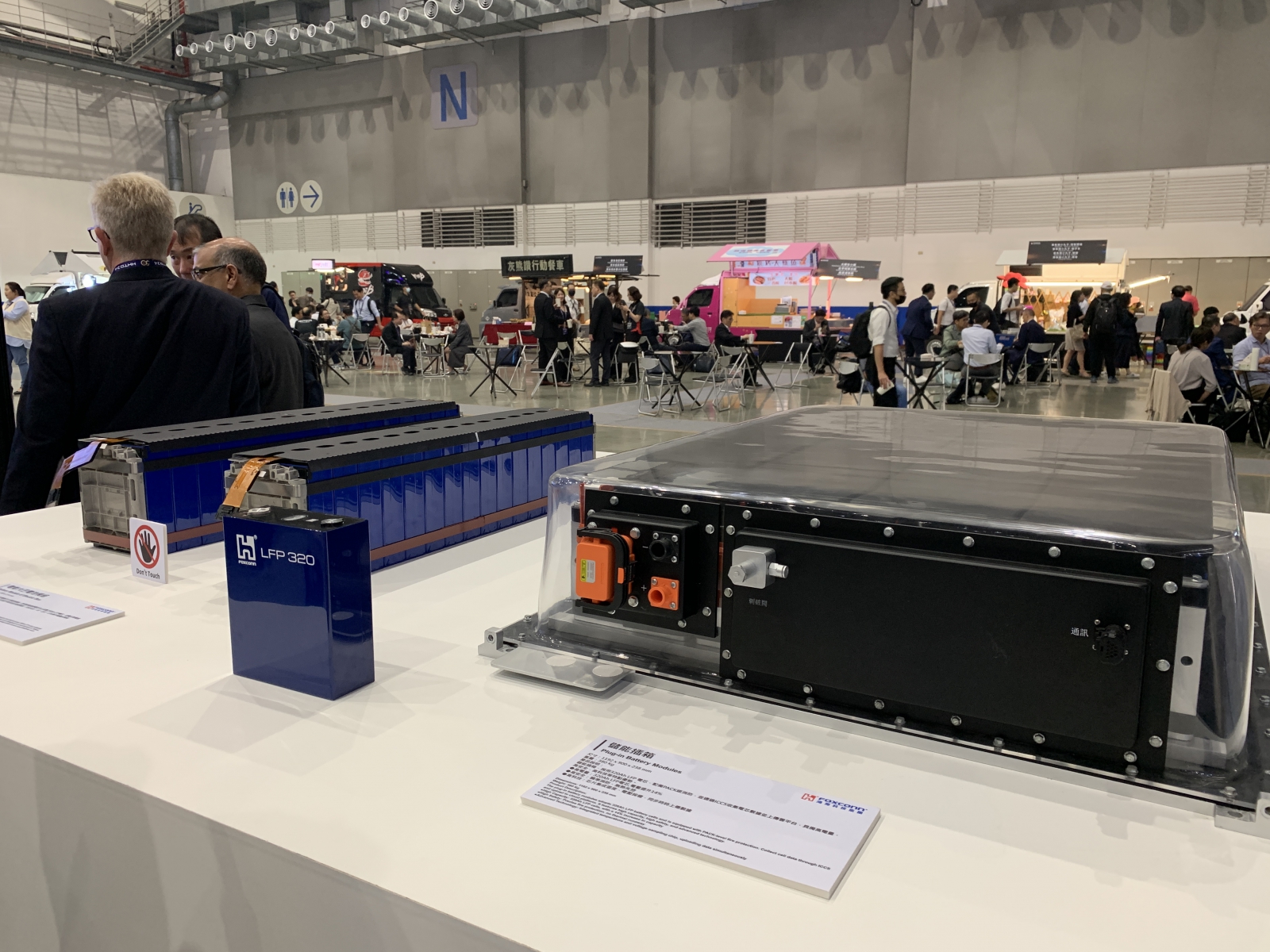
.JPG)


